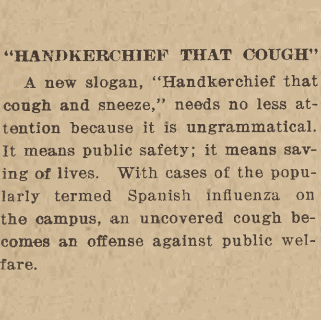In 1918 and 1919, the Spanish flu pandemic swept through Iowa killing over 6,000 people and infecting more than 93,000. The archives of the Daily Iowan from this time period shed light onto what life was like during that time on campus and in the midst of World War I. While cootie garments are mentionedContinue reading “Handkerchief that cough and sneeze! Snippets from the Daily Iowan during the 1918 pandemic”
